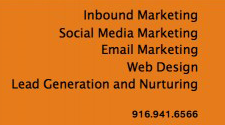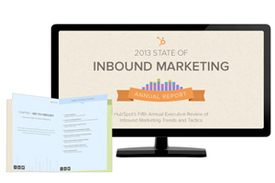Prior to launching Domino Theory: Smarter Business Communications, I spent 10 years in B2B marketing publishing trade media (and 15+ in consumer marketing and media before that). Long before anyone had heard of social networks, inbound marketing, or social marketing many of my days were spent convincing marketers that their advertising dollars were best spent reaching the audiences we delivered. Year after year, because we had the leading media brands in our space, these marketers were generally in agreement that our magazines, web sites, newsletters, and conferences were the right places to promote their messages and products.
[caption id="attachment_1020" align="aligncenter" width="225" caption="A Reference for Today's Marketers"] [/caption]
[/caption]
In 2008 things started to change. In October, when the markets crashed, ad spending all but stopped. As the markets found their equilibrium, we business publishers found ourselves in a new world. Ad dollars were not returning to the market. As we probed and did research, we found that dollars once dedicated to ad spending were being spent instead on web development and other marketing efforts that did not require our media partnership.
During the next couple of years it became increasingly clear that while manufacturers told us they value our trade magazines, web sites, newsletters, etc., they were finding that their businesses continued to thrive despite their reduced ad spend. What had changed?
What had changed was that manufacturers had found that through their email marketing and web initiatives they were able to create their own communication channels. Where they previously needed trade media to deliver eyeballs, they were now able to generate an audience on their own. Fast-forward to 2012 and this trend is still accelerating.

The B2B Social Media Book<----->Become a Marketing Superstar by Generating Leads with Blogging, LinkedIn, Twitter, Facebook, E-Mail and More by Kipp Bodnar and Jeffrey L. Cohen is the best resource I've found to date for B2B marketers looking to leverage the changing media/marketing landscape. When Bodnar responded to a tweet I posted about the book asking if I'd write a review, I figured, why not?
The thesis of the book is simple, social networks, search engine optimization, e-mail marketing, and specific web site tactics, when applied properly and scientifically, have created an opportunity for B2B marketers to shift the cost of marketing from an expense to an asset. Because these marketing messages are no longer fleeting advertisements in an environment created and owned by others, Bodnar and Cohen make a compelling case that marketing becomes an annuity that continues to pay dividends long after the effort has been executed.
The general concept is one espoused by Bodnar's employer, Hubspot, called Inbound Marketing. The concept is to be a resource when your customers are looking for information and nurture them along in their education and decision process. In dong so, your company is able to successfully position itself as the solution the buyer was looking for in the first place. It's a quite a bit more more complicated, but you get the idea.
The mindset that Bodnar and Cohen espouse is that once marketers shift from thinking about generating leads, counting Facebook Likes, etc., and think about driving profit, the game changes. Marketers are now able to track customers from initial contact through the sale and beyond. Bodnar and Cohen show not only what to do, but why you should be dong it and how it's going to impact your career.
If You Can't Count It, Why Do It?
While this is hardly the first book to talk about using social networks as a marketing tool, Bodnar and Cohen take the important step of adding quantification. This is the piece that is most compelling to me. I've always believed the mantra that, "If you can't count it, why do it?" As marketing moves from the mystical to the scientific,
The B2B Social Marketing Book offers a great road map.
The key piece to quantification is the formula the book provides that shows how to calculate true ROI of the marketing programs you put in place. By being able to demonstrate true ROI, marketing value increases dramatically.
Parts of the book covering content creation, blogging, use of social networks, etc., have been written about ad nauseam, but having everything one resource makes it easy to grab one reference whenever a question arises. However, there are good tips on leveraging social media at trade shows and removing internal roadblocks to marketing success that should be helpful to most marketers.
One word of warning, both Bodnar and Cohen work for companies that would like to sell you marketing services (Hubspot and Radian6 respectively). The book dovetails nicely with their companies' offerings, as it probably should, but there are more references to Hubspot's services than one might expect in a typical business reference.
For my part, I'm a big believer in the concepts put forth in the book and use many of them to assist my clients. The ability to quantify your marketing efforts is a game changer and I'm convinced all businesses will end up on this path eventually. If you're exploring how to move your company this direction or have already begun the migration,
The B2B Social Media Book belongs on your desk.
What do you think? Send us a note or post your comment below. [contact-form-7 id="541" title="Contact form 1"]If you found this post interesting and or useful, please share it with your fiends and colleagues using the buttons below. A business associate had referred this client to us. He wanted to hire us today, and we made the mistake of not going through our typical vetting and goal setting process. We're confident in our abilities, took a look at his then current inbound marketing numbers and had no doubt we could improve upon them.
A business associate had referred this client to us. He wanted to hire us today, and we made the mistake of not going through our typical vetting and goal setting process. We're confident in our abilities, took a look at his then current inbound marketing numbers and had no doubt we could improve upon them.












